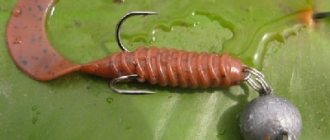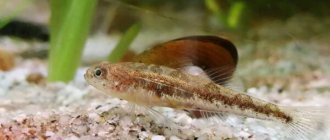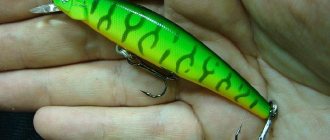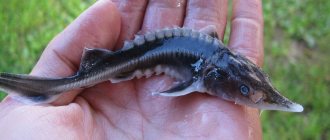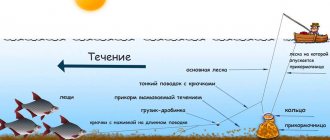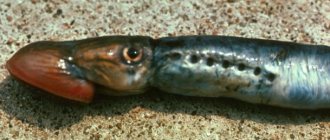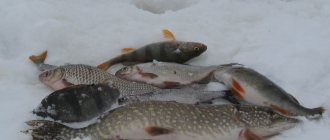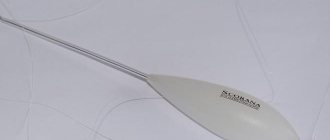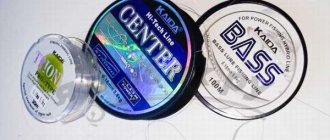Saddle design
The seine is a long cord leashes with hooks and sinkers attached to it . One end of the tackle with a sinker attached to it is located at the bottom of the reservoir, and the other is attached to the shore. You can use fishing line instead of cord. Nets are usually used on rivers, but they can also be used in still water.
The technique of fishing with this tackle is quite simple - you need to bait the bait on the hooks and leave the line in the pond for several hours. After this, the tackle is checked and any fish caught are removed.
There is another option for fishing with a line, when the two ends of the tackle are attached to two opposite banks of the reservoir. In this case, the load should be located in the middle of the cord.
Introduction
An ancient fishing tackle is the seine. Our ancestors successfully caught various fish using this unusual device.
Thanks to the shift, a good catch can be obtained both in areas with standing water and on rivers. Sea lure generally refers to fishing gear, so ordinary fishing enthusiasts will not find this type useful.
Depending on the equipment of the net, you can catch both peaceful species of fish and predatory representatives of the ichthyofauna.
To use this old gear with maximum benefit, you need to understand the principle of its operation and choose the optimal equipment option.
Let's look at how to make a sequin with your own hands.
How to make a shift
To make a saddle you need:
- cord or fishing line several tens of meters long;
- swivels (their number must correspond to the number of leashes);
- fishing line for making leashes;
- hooks;
- sinker.
The length of the cord must be selected based on the fishing conditions. In some cases, twenty meters is enough, in others a hundred-meter step is needed. In any case, it is better to select the length of the cord in such a way that there is a reserve - extra meters can always be left on the reel.
The weight of the sinker, in turn, can range from 100 grams to half a kilogram. It depends on the depth at the fishing spot and the strength of the current.
- The first step to making a saddle is to string swivels onto the cord.
- After this, make a loop at its end to secure the load.
- Make several loops on the cord so that each of them has one carabiner.
- Tie leashes to the carabiner.
- Attach hooks to the ends of the leashes.
At this point, the seine is ready, and you can wind it on the reel to go fishing. To make the tackle more convenient to store and transport, the leashes can be made removable , in which case they are either attached to carabiners or using the loop-to-loop method.
The length of the leash leashes is usually from half a meter to a meter. To prevent them from getting confused with each other, the distance between the swivels located on the cord for attaching them should be no less than their double length. Thus, the minimum distance for attaching meter leashes is two meters.
Types and varieties of strait
There are many different designs of saddles, which can be divided into several categories depending on the horizon of the bait.
- Bottom nets are designed for catching fish species that prefer to lead a bottom-dwelling lifestyle and feed. These include crucian carp, tench, carp, carp, pike perch, burbot, catfish, etc.
- Straps, the hooks of which are located in the middle layers of the water area , are better suited for catching sabrefish, rudd, pike, perch, and ide. To hold the leashes in the water column, floats or buoys are used, which are attached to the cord.
- Riding bars are usually stretched over the surface of the water area. The hooks are equipped with insects, behind which fish species such as chub, asp, and trout rise.
Horse transfer
There is another type of this gear - a horse harness. Its peculiarity is that the cord does not lie on the bottom, but is located on the surface of the water. It can be used for catching fish that feed in the upper and middle layers - such as chub, asp, grayling and trout. There are two options for this gear.
The first involves fastening the fencing on two opposite banks of the reservoir. To make it, just tie leashes with hooks to the cord.
In a more complex version, only one end of the cord is attached to the shore, and the other is located at the bottom. In order for the cord to be on the surface of the water, it is necessary to attach a float . The distance between these two elements of the tackle should correspond to the depth at the fishing spot, so it is better to attach the float so that it can be moved along the cord.
You can use a float with an eye through which you need to thread a cord. Above it there should be a bead, which you will move in one direction or the other to set the desired release length of the float.
Popular types of gear for catching pike perch
Fishing on a feeder. Which feeder should I use?
Fishing with a feeder is quite specific. Since pike perch is sensitive to equipment, it is worth using a feeder whose resistance the fish will not feel, but at the same time the equipment itself should pick up the smallest vibrations. The feeder must have a strong hook, since the pike perch has a strong mouth, and with a sharp hook, the hook must pierce it.
Equipment for catching pike perch with live bait from the shore
Such equipment includes both the above methods (donka, feeder), and the most popular method of fishing with live bait. Although the topic of fishing with live bait was described above.
Catching pike perch with a line: how to place it correctly?
Before installing the line, discard the buoy. Then the load is lowered and they begin to tie it to the main cord with leashes with hooks on which the nozzle is attached. As the cord is equipped, it is lowered into the water. The operation ends by lowering the second end of the cord with a load. If the bottom at the place where the slat is placed is snarled, then it would be correct to place a buoy to the second weight.
The best baits for fishing are large whitebait, small gudgeon, ruff and roach. According to the rules of sport fishing, the line is equipped with no more than ten hooks. It should be noted that catching pike perch with a line, like summer fishing with zherlitsa, is a passive method and is of little interest from a sporting point of view.
Tackle for pike perch with a retractable leash
This tackle is universal in any weather (when the temperature drops, the pike perch becomes very passive).
Otherwise, everything is unchanged, the only feature is that after hooking, you should under no circumstances loosen the tension, since the pike perch will free itself at the first opportunity, and you will experience not the most pleasant sensations.
Transfer to pike perch
You need to look for pike perch primarily in deep holes at a great distance from the shore, and for such fishing you need to use a boat. You will also need a heavy load that can hold the line at depth in strong current conditions.
Another feature is the large length of the cord, one end of which should be secured to the shore, and the other should be at the bottom of the pike perch hole.
At the same time, at night, this fanged predator is known to go out to feed on the coastal shallows, where it finds a large number of fry. For fishing in such conditions, the requirements for gear are much simpler - the length of the cord can be short, and it is also not necessary to use a larger weight.
Installation methods
Beginner fishermen make some mistakes when installing a line. The result of these incorrect actions is a lack of bite or loss of gear.
There are several proven methods for installing a saddle:
- With this method, one end of the tackle is first secured to the shore. To do this, a peg is driven into the ground, and a fishing line is rigidly fixed to it. Then the angler must swim into the water at a distance that allows him to overcome the length of the line. After this, a long stake is installed at the selected point. The connection of the other end of the strap can be rigid or elastic.
- In the second option, it is necessary to equip the net with a shock-absorbing cord 1-2 m long. Such tackle can be re-thrown without completely removing the net from the water.
- To catch bottom species of fish , for example, burbot, instead of a long stick, which is installed at depth, a heavy load is used. It could be a stone, brick or metal object. Additional weights are attached between the leashes on the main line, which are most easily made from sheet lead. A peg is also driven in near the shore and one end of the tackle is tied. Heavy loads can be thrown from the shore or lowered using a boat.
- The line can be installed so that the leads are in the water column. This method involves adjusting the position of the bait. This is easily done by changing the length of the ropes that connect the main line of the line with the buoys. First, the tackle is attached at one end to a peg or heavy weight. Then the buoys are installed and the fishing depth is adjusted. When the tackle is placed in the desired area, the second end is rigidly fixed.
- Horse casting is usually used on narrow bodies of water. The length of the main line should be enough to secure it on opposite banks. The middle of the beam may sag, so you should tie a foam float with a mast to the base. Such a simple device will hold the tackle above the surface of the water.
Change to catfish
If you intend to catch catfish, the tackle must be strong enough so that it can withstand the heavy loads that such fishing involves. To make it you can use:
- three-piece nylon cord;
- swivels with a tensile strength of 40 kg;
- monofilament line with a diameter of 0.8 mm.
Like pike perch, catfish are caught primarily in holes, so it is important to choose a fairly heavy load, and also to use a long cord that is enough to bring the tackle to the required distance from the shore.
Choosing bait for casting
Different types of fish require baits that suit their lifestyle and the season.
- You can catch large predators (pike, asp, burbot, pike perch) only with the help of live bait. The best fry are considered to be: bleak, roach, gudgeon, crucian carp, small perch, ruff, and goby.
- For targeted hunting for catfish, special baits are required. These include: large live bait, frogs, chicken offal, crayfish, shells, a bunch of worms.
- Peaceful fish can be caught using baits such as corn, pearl barley, worms, peas, foam balls, insect larvae, insects.
- It is preferable to catch vegetarian representatives of freshwater ichthyofauna (grass carp, silver carp) with green plant bait. A 10 cm long piece of the core of a young shoot of cattail or reed is attached to the hook.
Despite its archaism, this tackle can be beneficial to an angler on an unfamiliar body of water. Thanks to the sweep, it is possible to accurately determine where the fish are staying, as well as select the most attractive bait.
If the gear is successfully installed, you can catch prey on each hook. So fishermen will not be left without fish soup.
Source: pike-fish.ru
Fishing with a line
They're caught in the act both predatory and peaceful fish. As bait you can use:
- live bait;
- frogs;
- shell meat;
- worms;
- insect larvae;
- nozzles of plant origin.
It is more convenient for two people to fish with this tackle - one fisherman is on the shore, and the other brings the line with a sinker and lowers it at the desired point. If fishing takes place at a short distance from the shore, the line can simply be thrown into the water, in which case it works like a donka. But this fishing method is not suitable if baits are used that can easily fly off the hook.
How often to pull out the line depends on the intensity of the bite. Usually the gear is checked at intervals of half an hour to twelve hours. If you do this more often, fishing becomes more interesting and exciting. With this type of use, the crossbar is not much inferior in terms of sportiness to the donke. And if the place and time for fishing were chosen correctly, there is every chance of good catches.
Tackle for catching pike perch depending on the season
Winter fishing rods and tackle for pike perch
All winter gear can be divided into three large groups:
- Spinner - a fishing rod for trolling pike perch must meet strength requirements. The elements of this gear include: fishing rod - length from 50 to 70 cm, must have a “warm” handle made of cork, neoprene or foam.
- Live bait - from the name it is clear that it is used for fishing with live bait. It is carried out in two versions: a rod and a fishing rod with a nod. In the first option, any model of classic vents is used. In the second case, a regular winter fishing rod is used.
- Postavushi. Pike perch are caught using sprat fish.
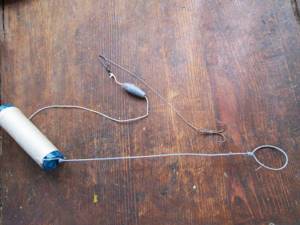
Tackle for catching pike perch in autumn/summer
Gear for autumn fishing essentially remains the same as winter fishing; in fact, this also applies to summer fishing. These are supplemented only by jig fishing and trolling. A mandatory requirement for a rod for jig fishing is a fast action, which ensures the sensitivity of the tackle and the correct feeding of the bait. The length of the form is from 2 to 2.3 m.
Trolling rods have distinctive features compared to other rods. First of all, these spinning rods are much shorter. These rods themselves are extremely powerful and heavy and, in a sense, are the most stable for pike perch.
In conclusion, I would like to note that pike perch is a truly powerful, tasty and extremely interesting fish, which is quite difficult to catch. However, the fishermen who caught this fish are undoubtedly masters of their craft.
Catching pike perch with twitches
The twitching method of catching pike perch can be used in areas above and below the dam. To catch twitchers, a rigid spinning rod is usually used. Fishing line or braid 0.2-0.6 mm. A weight weighing up to 200 grams is tied to the end of the base, depending on the intensity of the current when fishing below the dam and on the strength of the wind when fishing above the dam, where there is no current. At 10 and 20 centimeters above the load, you need to tie two leashes 10 centimeters long, which are equipped with tees.
There is another way to rig a fishing rod, which is used by local fishermen on the Rybinsk Reservoir: a steel wire with a cross-section of 0.2-0.3 mm and a length of up to 30 centimeters is tied to the fishing line 20 centimeters above the load. Loops are made at the ends of the wire, to which two vein leads of 10 centimeters each, equipped with tees, are tied.
The equipment is obtained in the form of a rocker arm. With such equipment, live bait does not overlap with the main line, as often happens with the first method. Fishing places are selected depending on the fishing season: in summer - in shallow places, in autumn - in depth.
The technique of catching twitches consists of very uniformly raising and lowering the sinker to the bottom; lifting the fishing rod is done by moving the hand. When lowering the sinker to the bottom and before lifting, a pause of 3-5 seconds is made.
When fishing for pike perch in calm weather on a current, do not anchor the boat, but in windy weather on a current it is necessary. When fishing, small live bait is used - roach, ruffe, gudgeon and other fish, it all depends on the reservoir. The live bait is put on a hook behind the back. This method gives the live bait a more natural presentation, and the hooking will be more reliable.
Source: fisher-book.ru
How to make a catch for pike perch
What is a shift
Peret tackle is a multi-hook corded fishing equipment designed for catching various types of fish using various types of bait in both still and flowing water bodies. The straps are distinguished by significant lengths and the number of hooks. They can act as both an amateur type of equipment and equipment for industrial fishing, which is especially important and is used in practice in marine areas. The principle of fishing does not imply constant monitoring of gear installed in a promising location. The fisherman is only required to install a cord with nozzles and periodically check it, removing the caught trophy and changing the nozzle.
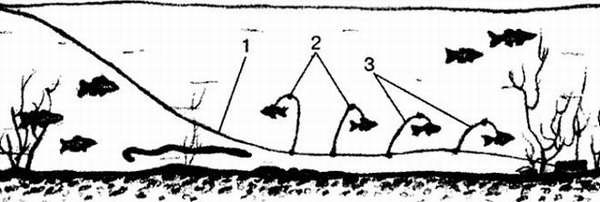
It is the presence of bait that distinguishes a legal fishing gear from a poaching one, which does not involve the use of bait, but is equipped with bare and sharp hooks that catch passing fish due to their frequent placement on a long cord stretched in the water. Catching catfish using a line, as well as predators such as burbot pike perch and pike, is very popular. Among white peaceful fish, hunting for trophy carp, bream and crucian carp is popular. Recently, a specific gear arrangement has made it possible to fish for silver carp.
Making tackle
Before you fish, you need, of course, to make some gear. To do this, it is necessary to take into account the characteristics of the reservoir, as well as the type of fish that you plan to catch with its help. The fact is that different types of gear and fishing methods are used for fishing for different predators. The line may differ in the length and thickness of the main cord, the length of the leashes, the size of the hooks, etc.
The classic version of the tackle is made according to the following algorithm:
- First of all, the reel is made. A wooden board is suitable for this. Two triangles are cut out on both sides. These places will serve for winding the cord. Using a hacksaw, cuts are made at the top and bottom of the ends to place the leashes. On one side, soft material is stuffed for attaching hooks so that they do not cling to each other, the main cord and leashes.
- Having decided on the length of the tackle, cut off the main cord. For beginners, it is recommended to make a crossing 15–20 meters long. If desired, of course, you can do it at 50 meters.
- Depending on the desired type of prey and the depth of the reservoir, leads are cut to the required length and diameter.
- Hooks corresponding to a specific predator are attached to the leashes. On the other side, carabiners are attached to attach to the main cord.
- Loops are made on the main rope for attaching leashes. The distance between two adjacent loops should be equal to twice the length of each leash. This is necessary so that neighboring leashes do not get confused.
- Depending on the type of fishing, you can attach sinkers, buoys, and floats to the main rope.
Of course, to catch a specific predator, its characteristics should be taken into account. As a rule, the methods for making gear differ, and each of its types has individual requirements. In any case, if you make and install the crossbar as needed, it will give a good result.
Everyone decides for himself whether to fish with a line or some other type of gear. It all depends on the preferences and goals of the fisherman. If this type of fishing does not bring the desired result and satisfaction, then you can choose another. You can find out about any of them on the fishing website.
Source: fishelovka.com

